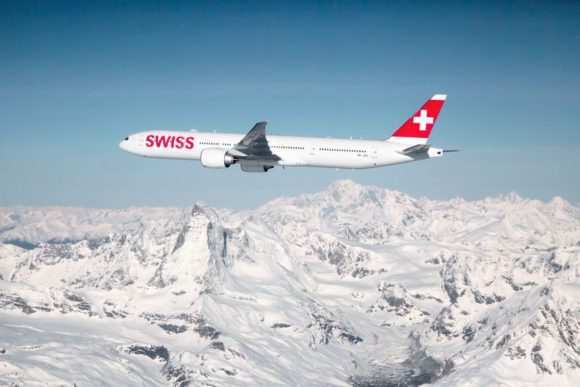
A350 900 Lufthansa MSN202 take off
Lufthansa Group recorded a EUR -2,1 billion net loss for the first quarter, it announced on June 3 during a delayed Q1-results presentation. Remember this period includes only the start of the Covid-19 crisis, so there is worse to come during Q2.
The net loss compares to a EUR -342 million loss for the same period last year. Adjusted EBIT was EUR -1.2 billion compared to -336 million last year. Group revenues were EUR 6.441 billion versus 7.838 billion.
The quarter includes a number of Covid-19 related impairments like a EUR 266 million charge on the decommissioning of some 70 aircraft, EUR 100 million on the goodwill of caterer LSG North America, and EUR 57 million on low-cost subsidiary Eurowings.
With most of the fleet on the ground from March, the Group’s fuel hedging strategy went awry and cost EUR 950 million during the quarter.
In the first three months and before the worst of the crisis hit, the Group flew 21.8 million passengers but this fell off a cliff to just 251.000 in April.
All airlines in the red
By airline, Lufthansa recorded an Adjusted EBIT of EUR -609 million versus -137 million last year, with revenues down 25 percent to EUR 2.637 billion. The parent airline reduced capacity by 90 percent by the end of the quarter and to -95 percent for April and May.
Eurowings’ Adjusted EBIT was almost flat compared to last year at EUR -175 million, but this was the result of grounding the airline to limit financial losses. Revenues were 20 percent down to EUR 332 million.
Also grounded since March has been Austrian Airlines, which booked an Adjusted EBIT of EUR -136 million compared to -77 million last year. Revenues dropped 24 percent to EUR 287 million.
SWISS and Edelweiss announced an Adjusted EBIT of EUR -82 million compared to a 40 million profit the same quarter last year. Revenues were 17 percent lower to EUR 920 million.
Like Air Dolomiti, Brussels Airlines also halted all operations from March, causing revenues to drop 17 percent to EUR 233 million and resulting in an Adjusted EBIT of EUR -64 million versus -47 million.
Stabilization plan instrumental to future
That’s all in the past and the focus is now on Lufthansa’s plan to restructure, re-size, and stabilize the Group as it enters the post-Covid era. Instrumental in this is the EUR 9 billion stabilization package that after some amendments following consultation with the European Commission has been approved by both the Executive and Supervisory Boards. Shareholder approval is pending, just as is that from the competition authorities.
The package, which includes a 20 percent share to be taken by the Economic Stabilization Fund, guarantees sufficient funds for the short and medium term. It will bolster the Group’s liquidity position, which included EUR 4.3 billion in cash at the end of March.
With Lufthansa burning EUR 800 million in cash a month despite reducing fixed costs by one-third, the main target of the Executive Board is to slash unit costs and improve free cash and bring them back to pre-crisis levels.
It announced new restructuring programs in all areas as well as intensifying existing restructuring programs at Austrian (-20 percent reduction staff costs, -20 percent fleet reduction) and Brussels Airlines (-25 percent reduction on workforce, -30 in fleet).
The board is still in discussions with unions and workforce representatives about the extent of job reductions within the parent airline and Eurowings, which reportedly will result in some 10.000 job losses. The sale of non-essential business units is examined.
Capex reduction includes fleet deferrals
In a step to reduce Capex, Lufthansa says it is in negotiations with Airbus and Boeing about “extensive postponements” of new aircraft deliveries. In January, Lufthansa Group had 198 aircraft on order, including 82 A320neo’s, 43 A321neo’s, 30 Airbus A350-900s, 20 Boeing 787-9s, 20 777-9s, and 2 777Fs. Some A350s have already been pushed out to 2027 instead of 2023.
Lufthansa has announced an aggressive ramp-up in capacity from this month on. It plans to operate some 2.000 weekly flights to over 130 destinations by mid-June. From September, capacity should be back to 40 percent of pre-crisis levels, with 90 percent of short-haul and 70 percent of long-haul destinations back on the schedule.
Yet, the Group expects to keep 300 out of its 763 aircraft permanently parked in 2021 and 200 in 2022. In 2023, the fleet will have been permanently reduced by some 100 aircraft, which in a first step includes the retirement of six Airbus A380s, five Boeing 747-400s, eleven A320ceo’s, three Boeing 767-300ERs, 13 Bombardier Q400s, two Airbus A330-200s, and eight A319s. Later on, it plans to retire all its Boeing/McDonnell-Douglas MD-11Fs.
Views: 4




